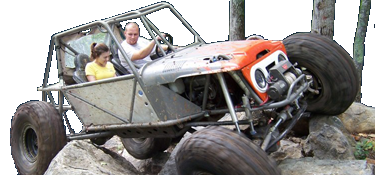Oliver's
Drive Line & Gear
- Joined
- Jul 16, 2005
Anyone have any scales in or around Winston. Need to weigh the new buggy for coil-overs.
Thanks.
Thanks.
Have you got any mock up springs/shocks on it currently?
If so work backwards and measure to get the actual load at the shock. This will be more accurate than using scales.
Assuming this is the proper way to measure the load?
Off-Road Coilover Springs | How to Fix Your Coilover Springs

As long as you realize that a 250 lb spring is not actually a 250 lb spring, you'll do just fine. Good enough for what you're doing though.
Scales are very accurate, but you need to do some geometry with them when you're starting with corner weights. It's very simple geometry though if you have solid axles front and rear, because then you just have a beam with a car attached to it and springs mounted at some angle between the two.
I was able to get some quick measurements this evening.
Fox 2.0 14" on all four corners. All 8 springs are 14"
The fronts are 150 over 250. Sitting at ride height the lower is compressed to 12" and the upper is 10 7/8" 7" of shaft showing.
The rears are 110 over 200 ( I think? They appear to be an off brand and the weight was written in sharpie and was very faded)
At RH the lower is compressed to 12 1/4" and the upper to 11" 8" of shaft showing.
The buggy is a V8 (6 liter) front engine, single seater and is fairly nose heavy. 3K total weight.
I'm sure I'm forgetting something.
Thanks for the help.
measure the total length of your springs.
@TRD got a diagram? or more detailed literature? I got sorta lost on this.....link to well written procedures or such?There are a lot of factors to look at when selecting rates, preload is one of many measurements.
The most accurate way to get weight carried by the springs is to take the following measurements:
Start with shock charged to desired pressure
Get vehicle to desired ride height without bump stops touching axle and without dual rate nuts touching the slider
Measure threads above upper spring perch
If tender coil, measure tender coil height
Measure shaft showing
Record upper and lower spring rates
Go to full droop (remove center limit strap, but not shock limit straps)
Measure shock shaft showing
If springs are tight - loosen upper spring perch until springs start to rattle
If springs are loose - tighten upper spring perch until springs stop rattling
If tender coil - measure new height of tender coil
Measure threads above spring perch
It's possible to compensate for not being able to reach the desired ride height, you just loose some accuracy, especially on emulsion shocks.
How much you moved the nut is preload (negative preload if the springs were loose)
Shaft measurements correlate everything
I keep a HUGE amount of component weight data so I can work with total vehicle weight.
And just to emphasize that, spring selection is ONLY the beginning of the process. You need to be willing to go into the shocks multiple times for valving to get the most out of the shocks...not just a smooth ride back to camp. If any owner isn't acclimated to do so, I suggest you hire someone with experience to watch you wheel and tune from there.Reserved for my thoughts when I get to a computer.
I'm going to elaborate on preload, light springs, motion ratio, and overall how to pick new springs,
And then follow up with my thoughts on spring choice and Daves unique situation and setup.

